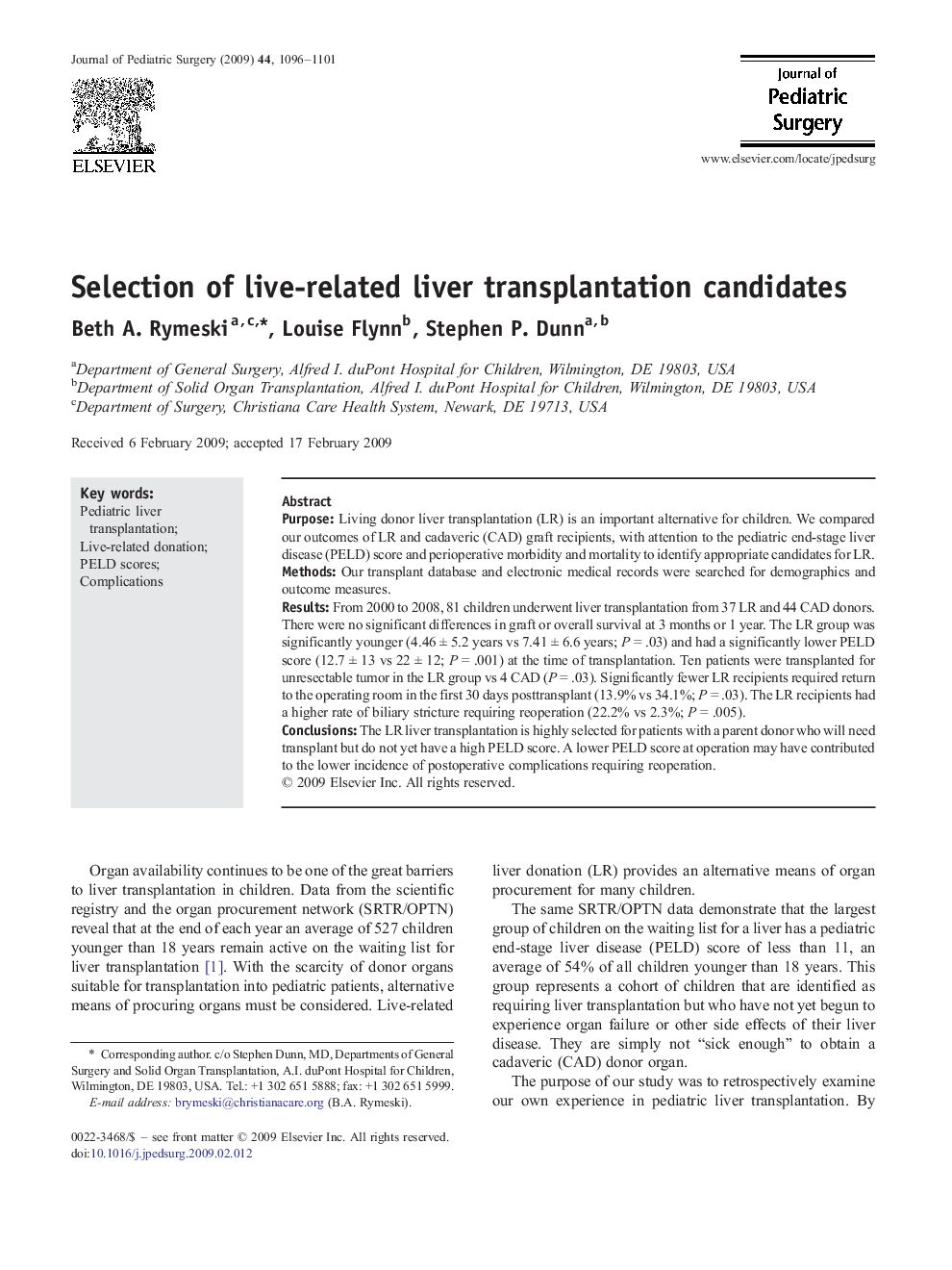| Article ID | Journal | Published Year | Pages | File Type |
|---|---|---|---|---|
| 4159471 | Journal of Pediatric Surgery | 2009 | 6 Pages |
PurposeLiving donor liver transplantation (LR) is an important alternative for children. We compared our outcomes of LR and cadaveric (CAD) graft recipients, with attention to the pediatric end-stage liver disease (PELD) score and perioperative morbidity and mortality to identify appropriate candidates for LR.MethodsOur transplant database and electronic medical records were searched for demographics and outcome measures.ResultsFrom 2000 to 2008, 81 children underwent liver transplantation from 37 LR and 44 CAD donors. There were no significant differences in graft or overall survival at 3 months or 1 year. The LR group was significantly younger (4.46 ± 5.2 years vs 7.41 ± 6.6 years; P = .03) and had a significantly lower PELD score (12.7 ± 13 vs 22 ± 12; P = .001) at the time of transplantation. Ten patients were transplanted for unresectable tumor in the LR group vs 4 CAD (P = .03). Significantly fewer LR recipients required return to the operating room in the first 30 days posttransplant (13.9% vs 34.1%; P = .03). The LR recipients had a higher rate of biliary stricture requiring reoperation (22.2% vs 2.3%; P = .005).ConclusionsThe LR liver transplantation is highly selected for patients with a parent donor who will need transplant but do not yet have a high PELD score. A lower PELD score at operation may have contributed to the lower incidence of postoperative complications requiring reoperation.
